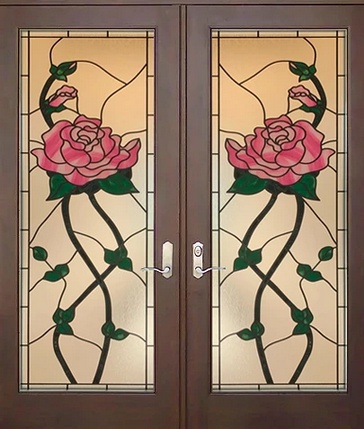Introduction:
In the realm of contemporary architecture and interior design, the use of sliding glass doors has gained immense popularity, bringing a seamless blend of functionality and style to residential and commercial spaces. The concept of "Glide into Style" encapsulates the essence of innovative sliding glass door design, transforming traditional entrances into modern, visually appealing focal points. This article delves into the various aspects of sliding glass door design, exploring their versatility, aesthetic appeal, and the numerous benefits they bring to spaces.
Versatility in Design:
Sliding glass doors have evolved far beyond their conventional roles, transcending mere functionality to become a focal point of design innovation. Unlike traditional hinged doors, sliding glass doors offer a versatile and space-saving solution, making them ideal for a variety of settings, including homes, offices, restaurants, and retail spaces.
One of the key features that contribute to the versatility of sliding glass doors is their ability to seamlessly connect indoor and outdoor spaces. Large glass panels provide unobstructed views of the surrounding environment, creating a harmonious connection with nature. This design choice not only enhances the visual appeal of a space but also fosters a sense of openness and continuity.
The flexibility in design extends to the materials used in sliding glass doors. From traditional clear glass to frosted or tinted options, as well as the incorporation of decorative elements like etching or grid patterns, the possibilities are vast. This allows homeowners and designers to customize sliding glass doors to suit the overall aesthetic of a space, whether it's modern, minimalist, or eclectic.
Aesthetic Appeal of Sliding Glass Door Designs:
The aesthetic appeal of sliding glass doors lies in their ability to introduce an abundance of natural light into a space, creating an open and airy atmosphere. The transparency of glass panels enhances the perception of space, making rooms feel larger and more inviting. This plays a crucial role in modern design, where the emphasis is often placed on creating bright, comfortable, and visually pleasing environments.
Innovative design elements, such as frameless or minimalistic frames, contribute to the sleek and contemporary look of sliding glass doors. The absence of bulky frames allows for an uninterrupted view and adds a touch of sophistication to the overall design. Additionally, the incorporation of sliding glass doors with unique patterns or textures can serve as a statement piece, elevating the aesthetic appeal of any space.
The seamless integration of sliding glass doors with other architectural elements, such as floor-to-ceiling windows or skylights, enhances the overall design cohesiveness. This integration creates a sense of unity between the interior and exterior, blurring the boundaries and bringing a sense of harmony to the space.
Benefits of Sliding Glass Door Designs:
-
Space Optimization: Sliding glass doors are renowned for their space-saving design. Traditional hinged doors require clearance for opening and closing, limiting furniture placement and room layouts. In contrast, sliding glass doors glide horizontally along a track, eliminating the need for swing space. This makes them an excellent choice for smaller rooms or areas where space efficiency is paramount.
-
Natural Light and Energy Efficiency: The expansive glass panels of sliding doors allow natural light to flood the interior, reducing the need for artificial lighting during the day. This not only creates a brighter and more inviting space but also contributes to energy efficiency by minimizing reliance on electrical lighting. The increased natural light also has positive effects on mood and well-being.
-
Indoor-Outdoor Connectivity: One of the standout benefits of sliding glass doors is their ability to seamlessly connect indoor and outdoor spaces. When opened, these doors create a fluid transition between interior living spaces and outdoor patios, decks, or gardens. This connectivity enhances the overall living experience, making spaces feel larger and providing easy access to fresh air and natural surroundings.
-
Ventilation and Air Circulation: Sliding glass doors offer the advantage of adjustable ventilation. Homeowners can partially or fully open the doors to allow fresh air to circulate, creating a comfortable and well-ventilated environment. This feature is particularly beneficial in regions with pleasant climates, allowing residents to enjoy the benefits of both indoor and outdoor living.
Conclusion:
In the ever-evolving landscape of architectural design, innovative sliding glass door designs stand out as versatile, aesthetically pleasing, and highly functional elements. The "Glide into Style" concept encapsulates the transformative impact that sliding glass doors can have on the look and feel of a space.
The versatility of sliding glass doors, evident in their ability to seamlessly connect indoor and outdoor spaces, offers a unique design solution for modern living. Their aesthetic appeal, characterized by sleek frames and expansive glass panels, contributes to the creation of bright, open, and inviting environments.
Beyond their visual appeal, sliding glass doors bring a host of benefits, including space optimization, increased natural light, energy efficiency, and enhanced indoor-outdoor connectivity. These doors have become more than just entryways; they are architectural features that define the character of a space and improve the overall quality of living.
As the demand for contemporary and functional design solutions continues to grow, sliding glass doors remain at the forefront of innovation, embodying the perfect synergy of form and function. Whether in residential homes, commercial spaces, or hospitality settings, the elegant glide of sliding glass doors continues to redefine the way we experience and interact with our built environments.


No comments yet